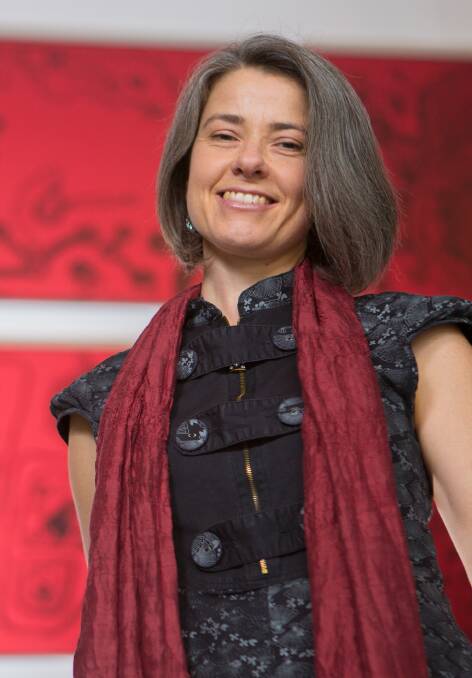How did William Shakespeare understand the moon?
Subscribe now for unlimited access.
$0/
(min cost $0)
or signup to continue reading

In one of the more unusual events to mark the 50th anniversary of the first lunar landing, ANU senior lecturer in English and drama Dr Kate Flaherty will speak on the topic The Globe and the Moon: Shakespeare's Astronomical Imagination.
It's the next talk in the Australian National University's podcast series Works That Shaped The World and will be delivered live at the ANU.
Dr Flaherty says the Apollo 11 in 1969 was "humans taking our story to the moon": the history and culture of millennia.
The Globe of the title is Shakespeare's theatre, built in 1599, in which writers and actors created their own worlds in microcosm.
"My imagination was piqued when I discovered [William] Shakespeare and Galileo [Galilea] were born in the same year."
She wondered what sort of relationship she might be able to trace between the scientific and literary developments during that period in the Renaissance and what might connect the playwright and the scientist. Not directly - they never met. But Shakespeare was influenced by the Copernican revolution and the discussion it provoked. with the sun, not the Earth, as the centre of the solar system and the moon belonging to the latter. Galileo brought this debate into the public sphere in going up against the Church.
Drama and science, Dr Flaherty says, might not be as disconnected as people often think. For example, the term "playwright" suggests an artisan, like the people who made the instruments for astronomers to use.
The moon was long an object of fascination and wonder and Dr Flaherty points out that Shakespeare's plays abound in lunar imagery used in various contexts reflecting thousands of years of observation and imagination.
Among other themes and examples, there's the comic and folkloric (Starveling in A Midsummer Night's Dream: "This lantern does the hornéd moon present / Myself the man i' the moon do seem to be") and the eclipses that reflects individuals' downfall and the disintegration of order (Gloucester in King Lear: "These late eclipses in the sun and moon portend no good to us").
There's also reference to the moon's effect on meteorological influence (Camillo in A Winter's Tale: "you may as well / Forbid the sea for to obey the moon"). The effect of the moon on the tides was known to Shakespeare and his contemporaries, she says - another of the connections between the scientific and the literary.
Dr Flaherty says there were a large number of eclipses between 1598 and 1605.
"It was not just an imaginative conceit: it happened an enormous number of times."
The Globe and the Moon: Shakespeare's Astronomical Imagination is on the Cultural Centre Kambri (ANU Building 153), University Avenue. Acton, on Wednesday, July 24 at 6.15pm. Drinks and food from 7.15pm. Free: register at eventbrite.com.au, Podcast: cass.anu.edu.au/wtstw


